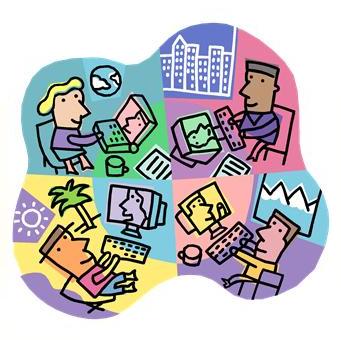eDiscovery Daily Blog
eDiscoveryJournal Webinar: Debate on Native Format Production and Redaction

eDiscoveryJournal conducted a webinar last Friday with some notable eDiscovery industry thought leaders regarding issues associated with native format production and redaction. The panel included George Socha of Socha Consulting, LLC and co-founder of EDRM, Craig Ball of Craig D. Ball, P.C. and author of numerous articles on eDiscovery and computer forensics, and Tom O’Connor, who is a nationally known consultant, speaker and writer in the area of computerized litigation support systems. All three panelists are nationally recognized speakers and experts on eDiscovery topics. The panel discussion was moderated by Greg Buckles, co-founder of eDiscoveryJournal, who is also a recognized expert with over 20 years experience in discovery and consulting.
I wrote an article a few years ago on review and production of native files, so this is a subject of particular interest to me. What follows is highlights of the discussion, based on my observations and notes from the webinar. If anyone who attended the webinar feels that there are any inaccuracies in this account, please feel free to submit a comment to this post and I will be happy to address it.
Having said that, here are the highlights:
- Definition of Native Files: George noted that the technical definition of native files is “in the format as used during the normal course of business”, but in the application of that concept, there is no real consensus. Tom, who has worked on a number of multi-party cases has found consensus difficult as parties have different interpretations as to what defines native files. Craig noted that it’s less about format than it is ensuring a “level of information parity” so that both sides have the opportunity to access the same information for those files.
- “Near-Native” Files: George noted that there is a “quasi-native” or “near-native” format, which is still a native format, even if it isn’t in the original form. If you have a huge SQL database, but only produce a relevant subset out of it in a smaller SQL database, that would be an example of a “near-native” format. Individual Outlook MSG files are another example that, as Craig noted, are smaller components of the original Outlook mailbox container for which individual message metadata is preserved.
- Position of Producing Native Files: Craig noted that the position is often to provide in a less usable format (such as TIFF images) because of attorneys’ fear that the opposition will be able to get more information out of the native files than they did. George noted that you can expect expert fees to double or even quadruple when expecting them to work with image files as opposed to native files.
- Negotiation and Production of Metadata: Tom noted that there is a lack of understanding by attorneys as to how metadata differs for each file format. Craig noted that there is certain “dog tag” metadata such as file name, path, last modified date and time, custodian name and hash value, that serve as a “driver’s license” for files whereas the rest of the more esoteric metadata complete the “DNA” for each file. George noted that the EDRM XML project is working towards facilitating standard transfer of file metadata between parties.
- Advice on Meet and Confer Preparation: When asked by Greg what factor is most important when preparing for meet and confer, Craig said it depends partly on whether you’re the primary producing or requesting party in the case. Some people prefer “dumbed down” images, so it’s important to know what format you can handle, the issues in the case and cost considerations, of course. George noted that there is little or no attention on how the files are going to be used later in the case at depositions and trial and that it’s important to think about how you plan to use the files in presentation and work backward. Tom noted it’s really important to understand your collection as completely as possible and ask questions such as: What do you have? How much? What formats? Where does it reside? Tom indicated that he’s astonished how difficult it is for many of his clients to answer these questions.
Want to know more? Tune in tomorrow for the second half of the webinar! And, as always, please share any comments you might have or if you’d like to know more about a particular topic.
